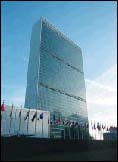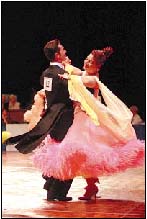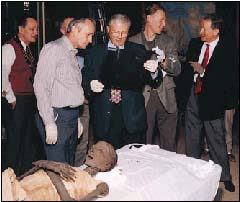By Shea N. Cutler
 BYU’s Model United Nations Team ranked in the top five nationally this year—not necessarily a rare occurrence. Having been a team for only eight short years, BYU’s Model U.N. program went from being “the new kids on the block” to ranking in the top 10 at the National Model United Nations Conference in its fourth year to ranking in the top five for the last three.
BYU’s Model United Nations Team ranked in the top five nationally this year—not necessarily a rare occurrence. Having been a team for only eight short years, BYU’s Model U.N. program went from being “the new kids on the block” to ranking in the top 10 at the National Model United Nations Conference in its fourth year to ranking in the top five for the last three.
The competition, held in New York City, is the largest and most prestigious of the Model U.N. competitions nationwide and was attended this year by 1,200 delegates from approximately 130 schools.
David Buckner, the director of student programs for the David M. Kennedy Center and a teacher of the course that prepares students for the competition, said the success of BYU’s 52-member team can be attributed to three elements: “The first aspect is the returned-missionary factor. A lot of our students have lived in foreign countries and have a greater understanding of international affairs and international relations. They relate to other peoples and other cultures better than most people.
“I think the second element is what we call the Sunday School factor. It sounds silly, but it’s the fact that our students, by and large, have grown up giving two-and-a-half-minute talks,” Buckner continued. The third element, he said, was the competitive nature bred at BYU and in the Church.
Though the BYU team is young, it goes up against schools such as Georgetown, which has been ranking in the top five for the past 20 years.
“Georgetown students are masters of foreign policy programs who study this stuff day and night and take classes from people like Henry Kissinger,” said Cory Leonard, assistant director of student programs for the Kennedy Center and also a teacher for the U.N. course. “But the fact that we can hold our own against them speaks well of the students and their ability to take what we teach them and to be diplomats.”
BYU students are not only holding their own at these competitions, but they are also doing it their own way. Many students at the competition participate in “corridor diplomacy,” or going down to the bars to get drunk, Buckner said. BYU students conduct real corridor diplomacy, or “all the substantive work, which takes place outside of formal session,” said Leonard.
Through the years, BYU students have become respected for their abilities and values. Of the only 26 available committee chair positions, BYU students were chosen for five this year, and three were assistant directors on the national staff. One of the assistant directors, Sharlene Gilmer, said she was chosen for the coveted position because she could be trusted.
The team has developed its own name, its own image, at the competition. And each year the image is put to the test because the team is made up almost entirely of new members. “If they mess up,” said Gilmer, “that reflects on all our reputations and on BYU’s. There’s a lot riding on our name.” But that doesn’t daunt the members, who have consistently upheld the BYU standard.
“We are in the top five, but we’ve also earned our reputation over the years,” Leonard said. “We are respected for the caliber of our delegates. They have both ability and character.”
Ability, character, and perhaps even their own smell.
While Buckner was in New York for a competition one year, he was riding in the elevator with another coach who said he could tell who all the BYU students were by the “scent of BYU.”
Buckner was surprised. “Scent!?” he exclaimed.
“Ya, you can tell,” the man replied. “You can sniff it out in the air because they are so squeaky clean.” Buckner said he’d take that as a compliment. The coach said simply and sincerely, “You should.”









